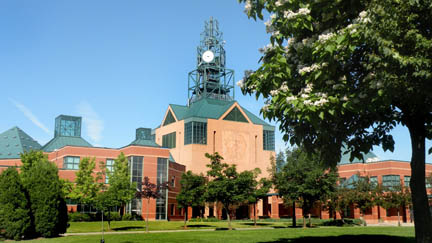Pickering, Oshawa to help Durham double in population by 2051 – report
Published September 13, 2021 at 10:22 am

Durham Region’s population is expected double in the next 30 years to 1.3 million, fueled by growth in innovation and technology and a quarter-million new homes to live in.
The projections are part of Envision Durham’s Wide Growth Analysis Technical Report, which looks at how and where cities and towns in Durham will grow, how to use and protect the region’s land and resources, what job types and housing opportunities will be needed, and how people and goods will be moved.
The 102-page report was full of data on the latter two points but provided scant details on the first two. The expansion of urban boundaries of Oshawa, Whitby and Pickering will likely be needed to accommodate the future growth, but it is unclear how much farmland and how many rural hamlets will need to be gobbled up to accomplish it.
Ontario’s Places to Grow document, released in 2005, identified Pickering and Oshawa as future high growth areas, though inaction of the planned Pickering Airport has modified growth expectations in Durham’s most western city.
Population growth in Durham will be primarily driven by the growing services-producing and goods-producing sectors, particularly sectors geared toward innovation and technology, the report declared. Growth will also be linked to continued immigration and intra-provincial migration from other areas of Ontario, such as other parts of the GTA.
“Looking forward, Durham Region’s distinction as a complete and competitive community is anticipated to represent a key driver of future economic success and population growth potential. In addition to benefiting from being part of the GTHA economic region, Durham also has its own unique advantages such as a competitive housing market, growing local employment opportunities and a relatively young labour force, which will attract newcomers and businesses to the region. At this time, it is not anticipated that the ongoing impacts from COVID-19 will dampen the region’s long-term growth prospects.”
The immigration from other parts of the GTA is expected to be important because Durham’s current population is skewing older, while new migrants coming into Durham are overwhelmingly younger, with 94 per cent under 40.
The five Lake Ontario shoreline municipalities host, which are home to most of the regional population, jobs, major employment areas, and institutions and will accommodate the vast majority of future growth. In the north, three municipalities consist of smaller settlement areas within a predominantly rural landscape. These rural and urban landscapes allow Durham Region to offer a significant range and diversity of communities and growth is expected in all of them.
To read the full report, click http://app.oshawa.ca/agendas/development_services/2021/09-13/corr_ds-21-176.pdf
The next report from Envision Durham will focus on housing intensification strategies.
insauga's Editorial Standards and Policies advertising





